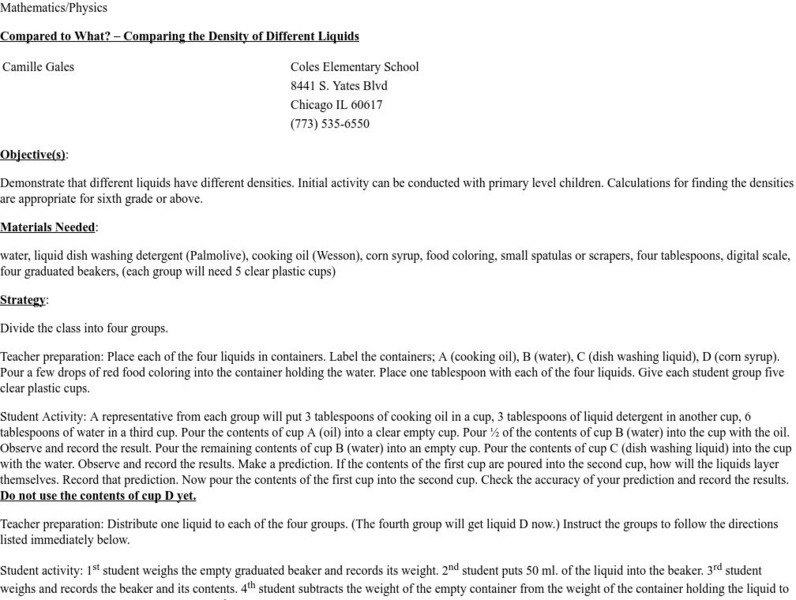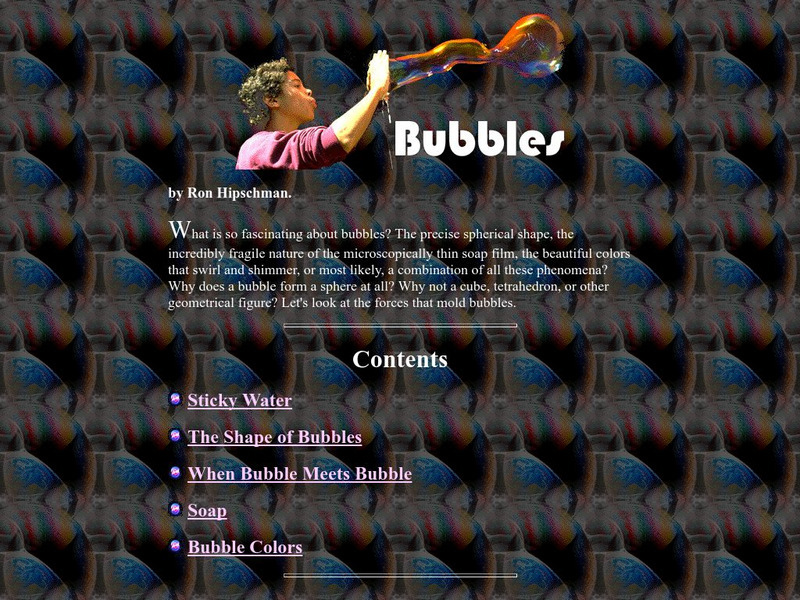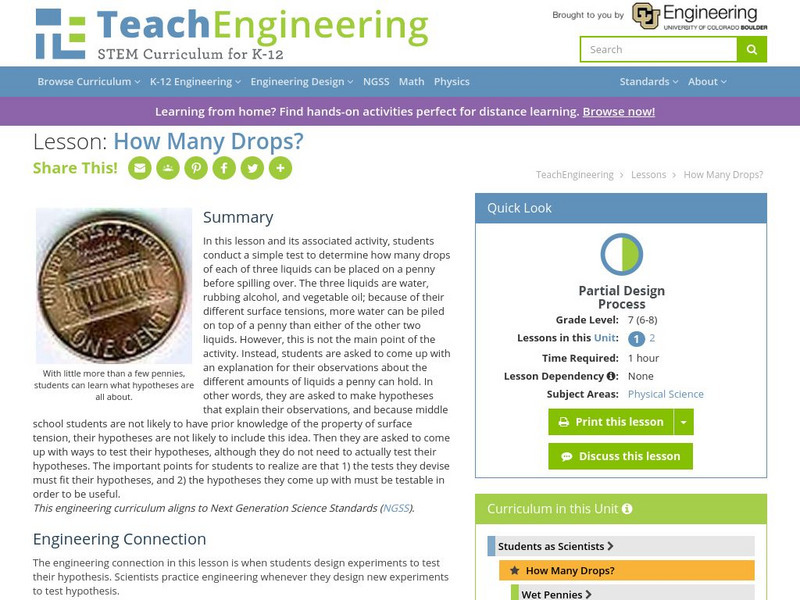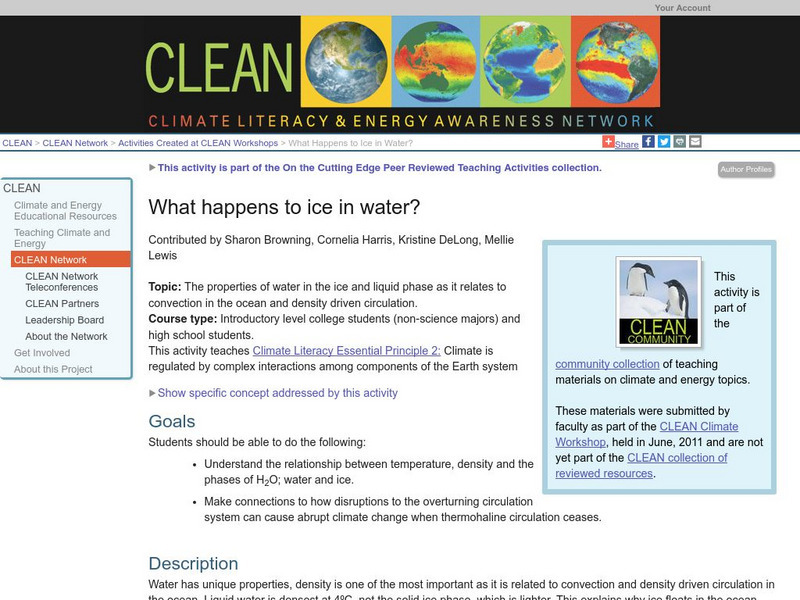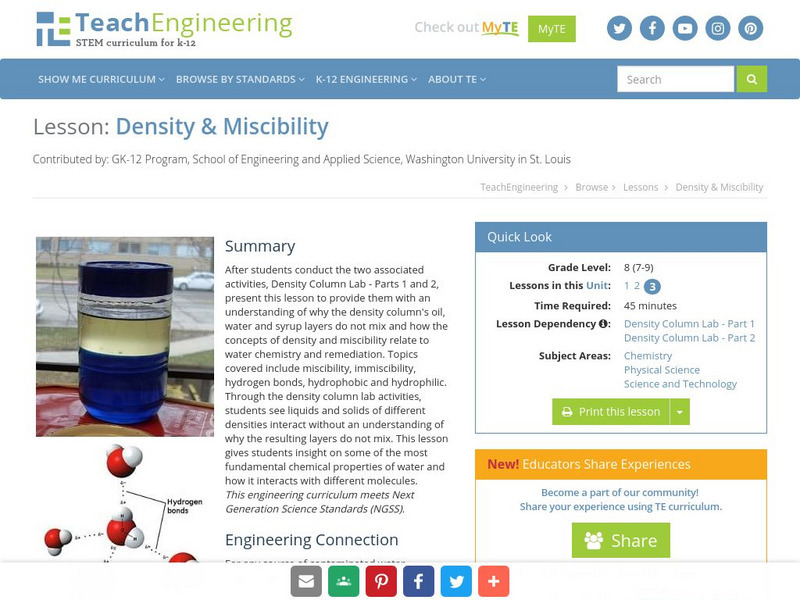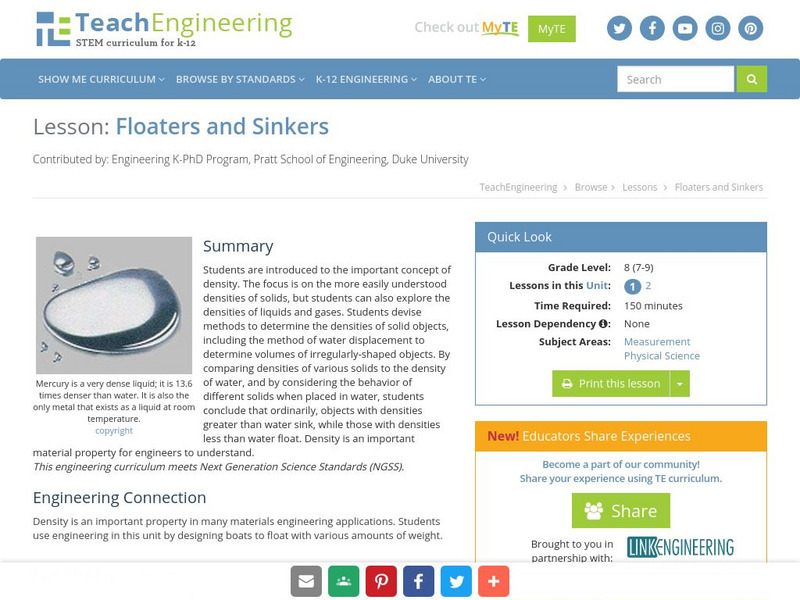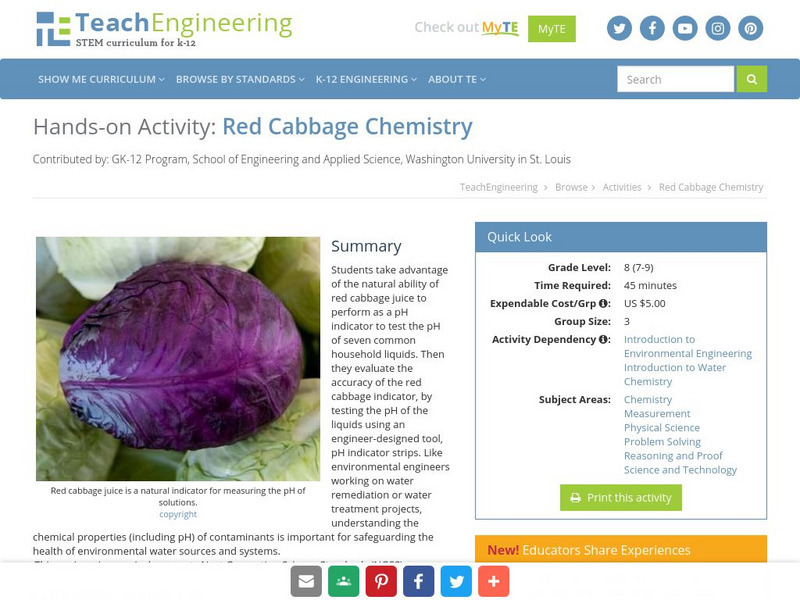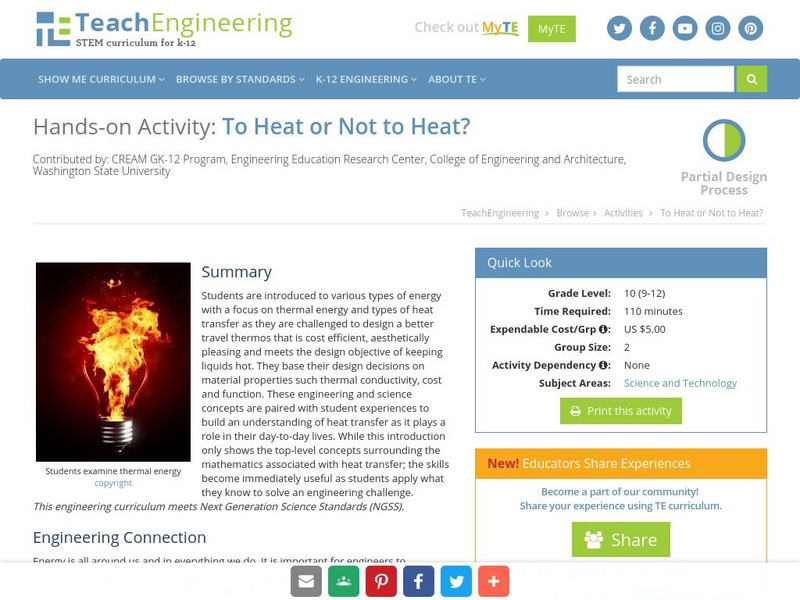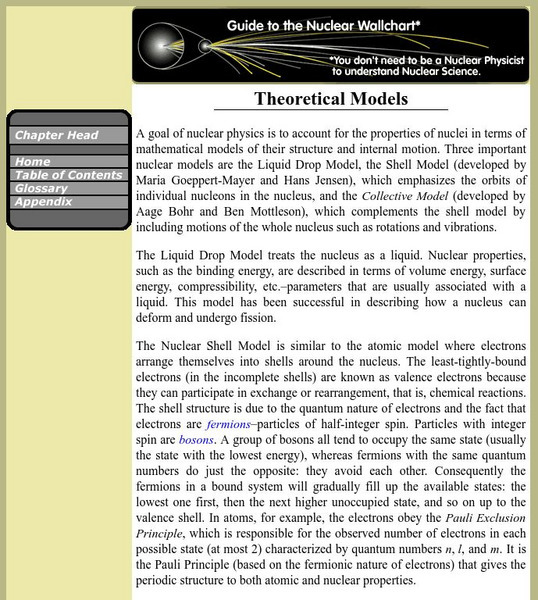Energy4Me
Energy4me: Understanding Density
This activity explores the property of density in a variety of liquids and solids.
Other
Siemens Science Day: Earth Science: By All Indications
A hands-on science experiment where students test acidity levels by using red cabbage extract and learn the acid levels of known and unknown liquids.
Science and Mathematics Initiative for Learning Enhancement (SMILE)
Smile: Comparing Liquid Density
Because different liquids have different properties, density also differs. In this instructional activity from the Illinois Institute of Technology, young scholars will calculate densities of water, dish-washing detergent, cooking oil,...
PBS
Pbs Teachers: Water Density
Demonstrate the effect that dissolving different amounts of salt in water has on the density of the liquid.
PBS
Pbs Teachers: Soap Powered Boat Experiment
Examine surface tension by floating an index card that has been cut into a boat shape on water, then dropping liquid soap near the "engine" section of the index card.
Concord Consortium
Concord Consortium: What Makes Water Special?
Students will develop explanations connecting observations of water with properties that water exhibits through the following activities. Activity 1 How are water and other liquids similar? Activity 2 Why is water different from other...
Oklahoma State University
Oklahoma State University: Chem 1215: Periodic Table
Explains different sections of the periodic table, and how they are used.
PBS
Pbs Learning Media: The Ruff Ruffman Show: Teacher's Guide: Kitchen Chemistry
Learn about kitchen chemistry alongside Ruff Ruffman. Learners can use the videos, games, and activities from The Ruff Ruffman Show to discover how by investigating solids and liquids and exploring heating and cooling, science can help...
Exploratorium
Exploratorium: Soap Bubbles
A scientific look at soap bubbles. Find out what it is about soap and water that allows bubbles to occur, how bubbles stick to each other, and why they are always a sphere. There are even formulae for making your own bubble solution.
University of California
Ucsb Chemistry and Biochemistry: Models Matter
Matter of any type can be subdivided into particles that are too small to see, but even then the matter still exists and can be detected by other means. Students will participate in hands-on activities to prove that matter is made up of...
TeachEngineering
Teach Engineering: Measuring Lava Flow
Students learn how volume, viscosity and slope are factors that affect the surface area that lava covers. Using clear transparency grids and liquid soap, students conduct experiments, make measurements and collect data. They also...
TeachEngineering
Teach Engineering: How Many Drops?
In this lesson and its associated activity, learners conduct a simple test to determine how many drops of each of three liquids can be placed on a penny before spilling over. The three liquids are water, rubbing alcohol, and vegetable...
TeachEngineering
Teach Engineering: Fluid Power Basics
Students learn about the basic fundamental concepts regarding fluid power, which includes both pneumatic, which utilize gas, and hydraulic, which utilize liquid, systems. Both systems contain four basic components: a reservoir, a pump or...
TeachEngineering
Teach Engineering: Students as Scientists
This curricular unit contains two lessons that let students actually do the work of scientists as they design their own experiments to answer questions they generate. In the first lesson and its associated activity, students conduct a...
Climate Literacy
Clean: What Happens to Ice in Water?
Students investigate the properties of water in the ice and liquid phase as it relates to convection in the ocean and density driven circulation, and ultimately the climate.
TeachEngineering
Teach Engineering: Density & Miscibility
After young scholars conduct the two associated activities, Density Column Lab - Parts 1 and 2, present this lesson to provide them with an understanding of why the density column's oil, water and syrup layers do not mix and how the...
TeachEngineering
Teach Engineering: Floaters and Sinkers
This lesson introduces students to the important concept of density. The focus is on the more easily understood densities of solids, but students can also explore the densities of liquids and gases. Students devise methods to determine...
Museum of Science
The Atom's Family: Phases of Matter
Help the Phantom choose a material and observe the changes at different temperatures in the molecule chamber. What happens to the elements or molecules as the temperature changes?
TeachEngineering
Teach Engineering: Red Cabbage Chemistry
Students take advantage of the natural ability of red cabbage juice to perform as a pH indicator to test the pH of seven common household liquids. Then they evaluate the accuracy of the red cabbage indicator, by testing the pH of the...
TeachEngineering
Teach Engineering: Concentrate This! Sugar or Salt
Students investigate the property dependence between concentrations and boiling point. First, they investigate the boiling point of various liquid solutions. Then they analyze data collected from the entire class to generate two boiling...
TeachEngineering
Teach Engineering: To Heat or Not to Heat?
Students are introduced to various types of energy with a focus on thermal energy and types of heat transfer as they are challenged to design a better travel thermos that is cost efficient, aesthetically pleasing and meets the design...
TeachEngineering
Teach Engineering: Surface Tension
Surface tension accounts for many of the interesting properties we associate with water. By learning about surface tension and adhesive forces, students learn why liquid jets of water break into droplets rather than staying in a...
Lawrence Berkeley National Laboratory
Berkeley Lab: Theoretical Models
Resource explores three important nuclear models: Liquid Drop Model, Nuclear Shell Model, and Collective Model.

